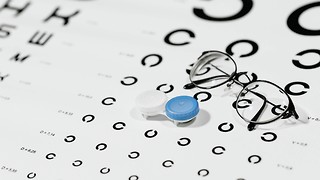CamCard never declines (unless you’re not allowed in that library)
Sophie Patel explains the radio technology inside of our University Cards

Have you ever wondered how your CamCard allows you to do so much every day, from printing, paying for meals, opening doors, and sailing past the tourists in the queue for King’s? Our University Cards (colloquially known as CamCards, but not to be confused with the official alumni CAMcards) are essential to our lives in Cambridge, and, as a physicist, I felt it my duty to reveal the curious science hiding behind our glamorous mugshots.
CamCards operate using radio frequency identification, or RFID. RFID technology has crept into many aspects of modern-day life, from bankcards to passports to theft detection systems in shops. This surprisingly simple but powerful system utilises the physical phenomenon of electromagnetic induction, where electric current can be generated by changing the magnetic field around an electrical conductor without directly touching it. If you were to deconstruct your CamCard, inside you’d find an RFID chip and antenna.
“This allows the data in the microchip to be transferred to the reader via radio waves”
The RFID chip is where all the information that makes your CamCard yours is stored, comparable to how information is stored in a pet’s microchip. The antenna is a coiled wire embedded into the plastic structure of the card, its essential property being that it is made out of a conductive material. When you go to use your CamCard by bringing it to a reader (which always has a magnetic field around it), what is happening is that the magnetic field around the reader is disrupted as the conductive wire in the CamCard gets closer. This disruption induces a current across the wire, which activates the microchip inside the card. This allows the data in the microchip to be transferred to the reader via radio waves, letting you pay for your meal if the data in the microchip says you have enough money, or open a door the microchip says you have access to.
What’s especially useful about RFID technology is that the card does not need batteries or charging; it is powered entirely by electromagnetic induction from the reader’s magnetic field. If you’ve ever wondered how library check out machines magically know what book is being checked out just by putting it down, you would find your answer in the RFID technology tucked away in the library cover for the book – this is also what sets off the alarms if you’ve forgotten to renew your book and stroll through the magnetic field in the detectors on your way out. You would also find RFID behind those mystifying Uniqlo checkout machines that somehow know what you’ve placed on them without you scanning anything.
“RFID is a product of World War Two espionage”
RFID technology is not a product of the 21st century, nor was it developed to prevent you from sneaking into the back gate of John’s on a Friday. It is essentially a product of World War Two espionage, and so, unsurprisingly, it has been utilised in sinister ways.
The inventor of the peculiar theremin instrument (which you may be familiar with if you’ve watched the Big Bang Theory), Leon Theremin, was part of a small group of young Russian men who, in the 1940s, produced a large carved ceremonial American seal as a gift for the American ambassador to the USSR at the time, William Averell Harriman. Presented to him as an offering of friendship, Harriman hung it up in his office for seven years before it was discovered to be an espionage device. Upon receiving the seal, the Americans scanned it for electrical devices, yet, despite not finding any, confidential conversations were overheard and broadcast to USSR agents. They had managed this seemingly impossible feat through early RFID technology embedded in the seal – a genuine Trojan horse – and had nearby operatives beaming radio waves towards the building. This activated the tiny antenna and microphone system hidden within the seal mounted in pride of place on the walls of the ambassador’s office, and allowed the USSR to eavesdrop into crucial conversations on national security.
I thoroughly enjoyed learning more about the humble CamCard (and baffling my porters when I asked for an explanation of its inner workings) and I encourage you to pause for a moment when you next use your CamCard to consider the science that has made your life easier, and the Soviet spies who came before us – even if that next time is flashing it at a bartender, begging for a student discount on your pint.
 News / SU reluctantly registers controversial women’s soc18 December 2025
News / SU reluctantly registers controversial women’s soc18 December 2025 Features / Should I stay or should I go? Cambridge students and alumni reflect on how their memories stay with them15 December 2025
Features / Should I stay or should I go? Cambridge students and alumni reflect on how their memories stay with them15 December 2025 News / Dons warn PM about Vet School closure16 December 2025
News / Dons warn PM about Vet School closure16 December 2025 News / Cambridge study finds students learn better with notes than AI13 December 2025
News / Cambridge study finds students learn better with notes than AI13 December 2025 News / Uni registers controversial new women’s society28 November 2025
News / Uni registers controversial new women’s society28 November 2025










